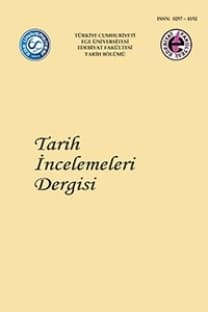Saint-Denis ruhbanın kroniği adlı Fransız kaynağına göre Niğbolu savaşı
Yıldırım Bayezid (1389-1402) döneminde Osmanlıların 1396 yılında Niğbolu’da Haçlı ordusuna karşı kazandıkları zafer Türklerin Balkanlardaki egemenliklerini kalıcı hale getirmiştir. Macar Kralı Sigusmund ve Bizans İmparatoru II. Manuel’in çağrılarıyla yapılan Niğbolu Haçlı Seferi’ne Fransızlar büyük ilgi göstermişti. Haçlı ordusunun büyük çoğunluğunu Fransızlar oluşturuyordu ve Jean Sans Peure başta olmak üzere birçok Fransız aristokrat ordunun kumandasındaydılar. Bu haliyle Niğbolu Haçlı Seferi Fransızların bir savaşı olarak görülmekteydi. Yıldırım Bayezid’in başarılı idaresiyle Türk ordusu Niğbolu önlerinde Haçlıları mağlup etti. Bu yenilgi şüphesiz en fazla Fransa’da yankı bulmuştur. Bir ruhbanın kaleminden çıkan ve savaşın çağdaşı olan Saint- Denis kroniği veya diğer adıyla VI. Charles’ın Vekayinâmesi, Niğbolu Haçlı Seferi’nin organize edilmesi, hazırlıkları, savaşın gelişimi ve sonuçları üzerine değerli veriler sunmaktadır. Bu veriler mağlup tarafın gözlemlerini yansıtması bakımından ilginç olduğu gibi olayın çağdaşı bir şahit tarafından yazılmış olması bakımından da değerlidir.
Battle of Nicopolis according to the French source titled " The chronicle of Saint-Denis clergy"
The victory that the Ottomans got against the Crusaders in 1396 in Nigbolu during Yıldırım Bayezid (1389-1402) period made the sovereignty of Turks permanent in the Balkans. The French took a great interest in Nigbolu Crusader Run, which was made by the call of the Hungarian king, Sigusmund, and the Byzantium Emperor, Manuel II. The French formed the majority of the Crusader army and many French aristocrats, primarily Jean Sans Peure, were in command of the army. In this case, Nigbolu Crusader Run was considered to be the war of the French. With the successful command of Yıldırım Bayezid, Turkish army defeated the Crusaders at around Nigbolu. It is no doubt that this defeat echoed most in France. Saint Denis chronicle written by a clergy and concurrent with the war, the Chronicle of Charles VI in its other name, presents valuable information about the organization of Nigbolu Crusader Run, its preparations, the development and results of the war. These data are invaluable in terms of its being written by a witness to the age as well as of its reflecting the observations of the defeated side.
___
- Atiya 1934 A. S. Atiya, The Crusade of Nicopolis, London.
- Chronique Chronique du Religieux de Saint-Denys, ed. et trad. M. L. Bellaguet, 6 cilt 1839-1852.
- Daş 2007/1 M. Daş, “La Chronique du Religieux de Saint-Denis adlı Fransız Kaynağının Türk tarihi Bakımından Değeri”, Folklor / Edebiyat, c. 49, s.203-210.
- Gauchier 1996 E. Gauchier, “Deux regards sur une défaite: Nicopolis (d’après la Chronique du Religieux de Saint-Denis et le Livre des faits de Boucicaut”, Cahiers de Recherches Médiévales et Humanistes, c. 1, s.93-104.
- Grévy- Ornato 1976 N. Grévy-Pons et E. Ornato, “qui est l’auteur de la chronique latine de Charles VI, dite du Religieux de Saint-Denis?”, Bibliothque de l’Ecole des Chartes, c. 134, s.85-102.
- Guenée 1994 B. Guenée, “Michel Pintoin: sa vie, son oeuvre”, Chronique du Religieux de Saint-Denys, c I, Paris.
- Le Livre des fais Le Livre des fais du bon mesire Jehan le Maingre, dit Bouciquaut, Mareschal de France et Gouverneur de Jennes, ed. D. Lalande, Cenevre 1985, s. 88-93.
- Nicolle 1999 D. Nicolle, Nicopolis 1396: The Last Crusade, Oxford.
- ISSN: 0257-4152
- Başlangıç: 1983
- Yayıncı: Prof. Dr. Süleyman Özkan
Sayıdaki Diğer Makaleler
Ankara'nın Başkent ilan edilişine İstanbul basının tepkileri
Meyyâfârikin İsmi Üzerine Bir Soruşturma
Osmanlı Saltanat Hülyaları ve Tarihî Bağlam
Karamanoğullarının Kökeni Meselesi
Ankara'nın Başkent İlan Edilişine İstanbul Basınının Tepkileri
XI. Yüzyılda Bizans-Norman İlişkilerine Bakış
